Fertilizing carrots: boric acid and potassium permanganate
Content:
To get a rich harvest of carrots, you need to work hard, since it is not easy to grow it even, not gnarled and not damaged by insects or diseases. Carrots need nutrients for good growth, so they build up not only green tops, but also a root crop. For top dressing, gardeners use both purchased mineral and organic fertilizers and folk recipes, namely, water the carrots with solutions of potassium permanganate or boric acid. Today in our article we will try to tell you in more detail how to properly use these solutions for feeding carrots. Let's reveal the little secrets of this fertilizer.
Fertilizing carrots: why do you need to water with manganese and boron
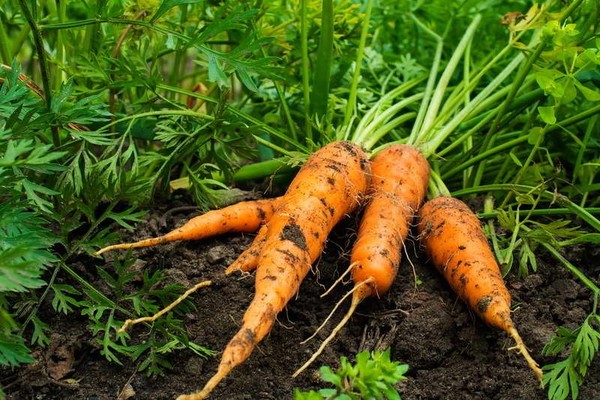
Carrots, unlike many garden crops. For active growth, a large amount of fertilizer is needed. Therefore, when there is a shortage of them, she quickly and negatively reacts. Using boric acid and potassium permanganate can provide the required amount of nutrients for carrot development.
The benefits of boric acid solution are that:
· Boron regulates the metabolism of carbohydrates and proteins in the plant's body. Proteins and carbohydrates are needed to build up vegetative mass.
· Increases the mass of the root crop.
· Gives carrots a brighter, more intense color.
· Increases the shelf life of the root crop.
· Increases sugar content in carrots. This makes the root vegetable sweet and tasty.
· When using boron, the yield increases by at least 20%.
The benefits of a potassium permanganate solution are that:
· Potassium permanganate has a disinfecting effect, protects plants from many fungal diseases and root rot.
· Protects carrots from one of the most dangerous pests of the carrot fly. It harms the entire plant, both aboveground and underground.
· Working as an antiseptic does not allow the root crop to rot.
· Prevents the appearance of spots or other damage on the leaves.
These two substances only have a beneficial effect on the growth and development of this culture. Therefore, watering carrots with these substances is very useful.
Advantages and disadvantages of such dressings.
Advantages:
· Improves the taste of the root crop.
· Improves the appearance of carrots.
· Helps fight and protects against insect pests and diseases.
· Accelerates growth.
· Increases productivity.
If you use these solutions incorrectly or in large quantities, you can harm the vegetable.
Disadvantages of boric acid:
· Causes leaf burns.
· The shape of the green part of the plant changes.
· May cause soil diseases, which gradually become chronic without treatment.
Disadvantages of potassium permanganate solution:
· Also, in large quantities, it causes burns on the leaves.
· Reduces yield.
· Excess potassium accumulates in the markovka and in the ground.
· Dries up root crops, foliage and soil.
For dressing it is necessary.
In order to fertilize carrots with solutions of these substances, you will need: a watering can, the preparations themselves, gloves and clean water at room temperature.
Fertilizing carrots: how to prepare a solution
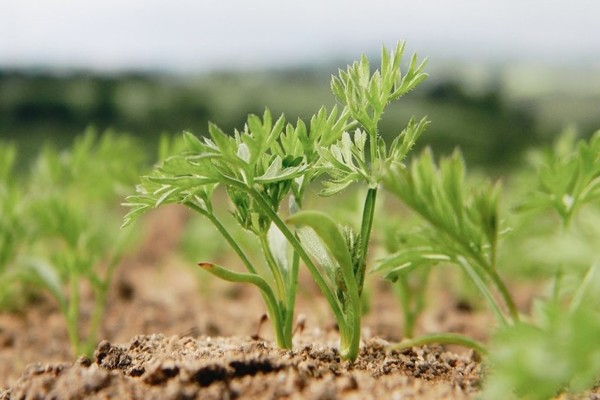
Solutions can be prepared as one-component solutions, i.e. use either only boric acid, or only potassium permanganate, and two-component, i.e. use both substances.
To prepare the boric solution, we only need hot water, since it does not dissolve in cold boron. The water temperature should be within 55 degrees.
Dissolve half a tablespoon of boron in a liter of hot water, stir well so that all boron crystals dissolve. Then we add another 9-10 liters of water, the temperature is about 25 degrees. The solution is ready.
To prepare a two-component solution, 4-5 grams of potassium permanganate and the same amount of boric acid are also dissolved in hot water. Allow to cool and water the plants.
How to use solutions
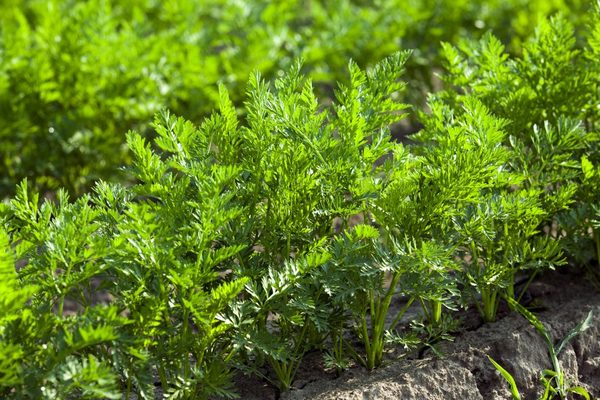
Feeding carrots with boron and potassium permanganate is possible in the summer, namely from July to August. It is then that the roots begin to ripen. And fed with boron, they will have a sweetish taste and bright color.
You need to water the plants with such fertilizer during the day, at the root, without touching the foliage. You can also feed carrot seeds with boron solution before planting.
For better germination, and then development, the seeds are soaked in a solution prepared from boron and nitrogen. Plants also need nitrogen, if there is a lack of it in carrots, the tops turn yellow, and the plants themselves may stop growing. For preparation, one liter of water and dissolve in it 1/3 teaspoon of boron and one teaspoon of nitrogen.
After germination of seeds, seedlings can be watered with fertilizer containing potassium. This element, just like manganese, helps the plant fight various diseases. The potassium solution is watered the plants two to three times, dissolving 6-7 grams. potassium in a bucket of water.
In addition, nitrophosphate fertilizer can be used to feed young plants. It contains nitrogen, phosphorus, potassium. A solution is prepared for watering. To do this, take 12-15 grams. nitrophosphate and dissolve in three liters of water.
Early feeding of carrots with mineral elements makes it stronger and more resistant to adverse environmental factors and diseases. For top dressing, it is best to use top dressing, fertilizers containing phosphorus, nitrogen and potassium are suitable. For feeding, you need about 50 grams of each component.
A month after germination of seeds, seedlings can be fertilized with potassium and nitrogen. In 9-10 liters of water, dissolve half a tablespoon of nitrogen and potassium and water the carrots.
Using solutions to control insect pests
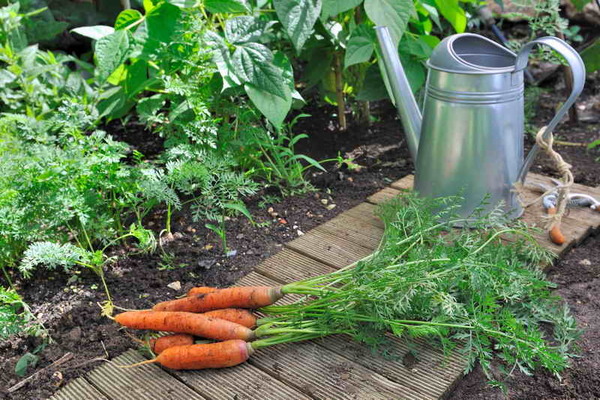
freshness carrots on the soil with a watering can in a vagetable garden
To spray carrots from pests, you will need a good spray bottle, gloves, clean water, the temperature of which is at least 25 grams.
· To protect against fungus, 1 gram of potassium permanganate is diluted in 10 liters. water.
To protect the plant from powdery mildew, half a teaspoon of the drug is dissolved in one liter of water.
· For any type of rot, dissolve three tablespoons of the substance in 1 liter. water.
In addition to potassium permanganate, boron can also be used for control and as a prophylaxis.
With the wrong use of drugs
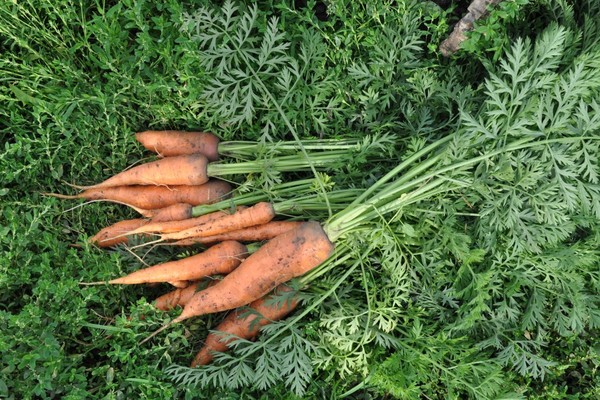
If solutions of potassium permanganate and boron are used incorrectly, then they will do more harm than good. When spraying, several rules must be followed.
1. Do not exceed the dosage, as an excess of substances can destroy the fruit, as well as negatively affect the entire plant.
2. It is necessary to spray the plant evenly, applying the agent to all its parts. If you process only on top, then you will not get the desired effect.
3. Dissolve boron only in hot water, otherwise the crystals will not dissolve and when processing plants will cause burns to the foliage.
4. Plants need to be processed in the evening, when the sun is no longer so shining, or in cloudy weather.
5. When spraying, there should not be many drops of solution on the leaves, otherwise they will get sunburn in the morning.
6. Young plants should be sprayed completely. In mature plants, only growth and young foliage are possible.
Taking proper care of your carrot is not so difficult. It is necessary to feed this vegetable on time, since it needs a lot of nutrients during growth. If you do not do this, then you will get a weak harvest or you may not get it at all.
Also, do not forget to water it and carry out preventive spraying against diseases and pests.Since it is much easier to prevent the disease in time than to cure it later.

